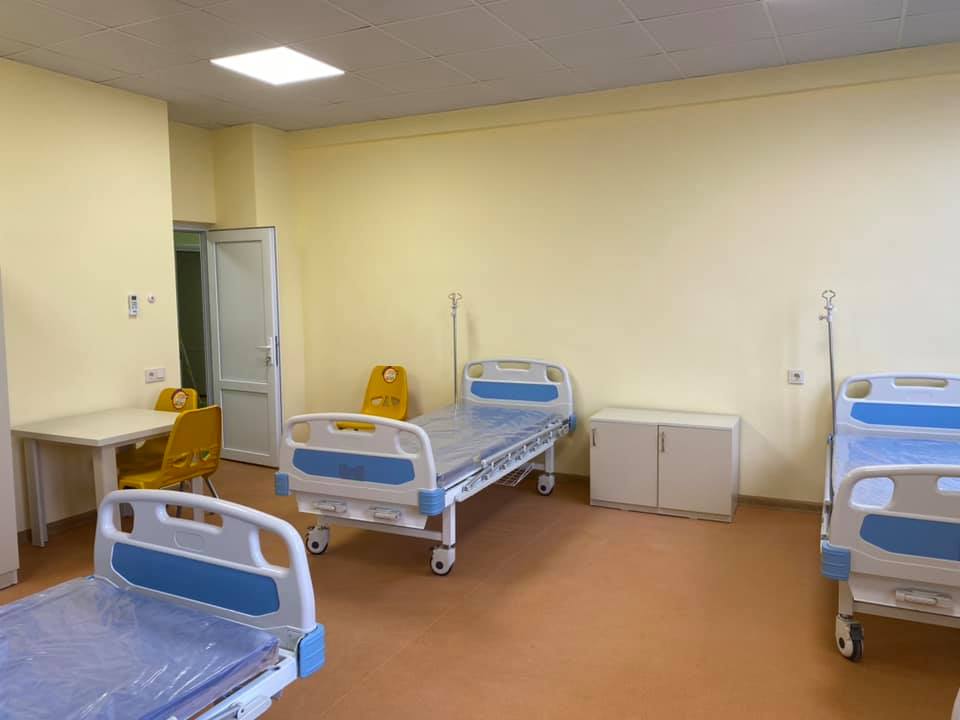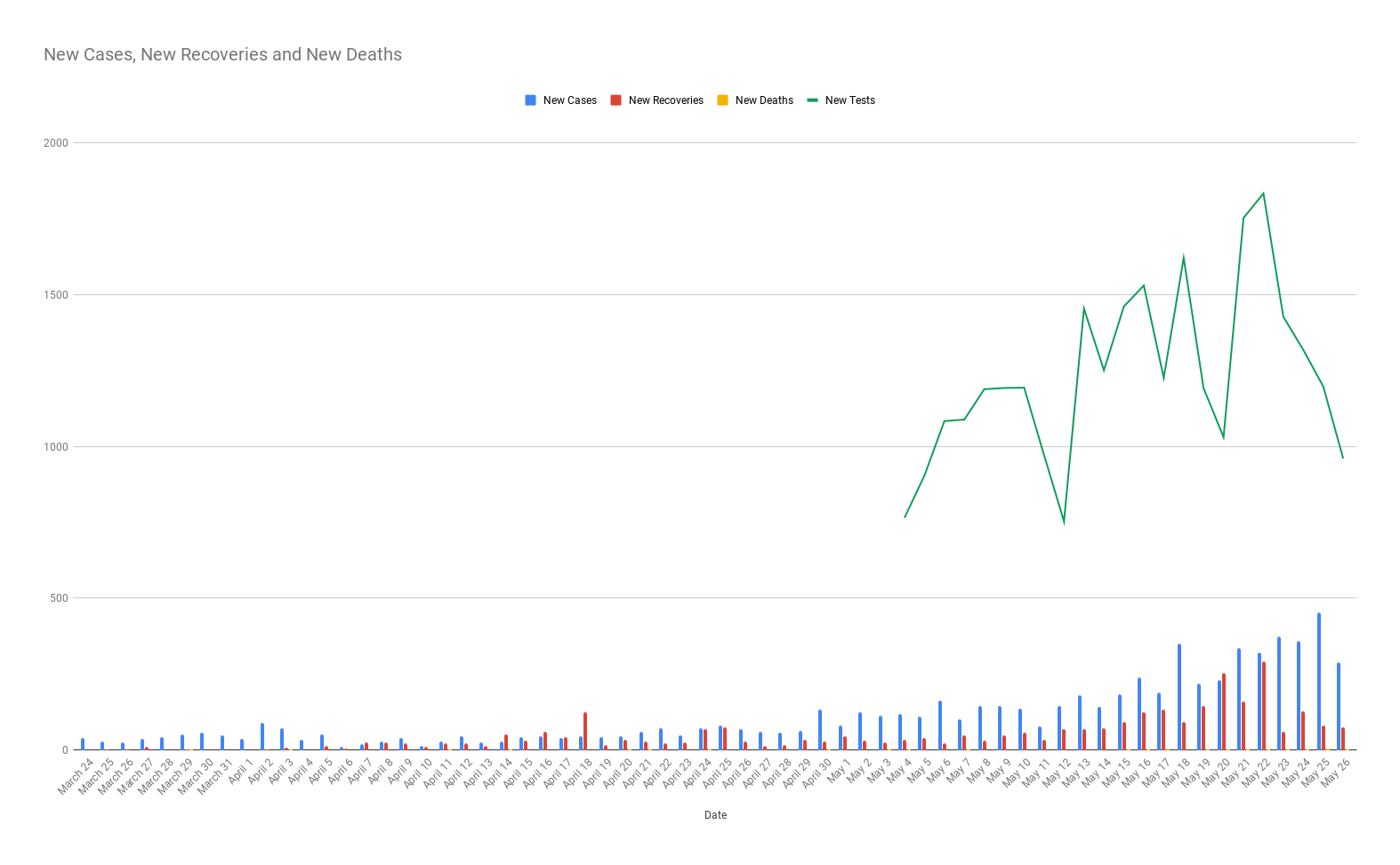YEREVAN—The sustained rise in new COVID-19 cases being registered in Armenia in recent weeks can be partially attributed to more aggressive testing according to the Armenian Centers for Disease Control. At a press conference on Monday, Dr. Liana Torosyan of the CDC expounded that these worrying statistics require contextualization. “Our PCR (polymerise chain reaction) testing capacity has been significantly expanded, with laboratories in Yerevan and the marzes now processing tests at a rapid rate,” Torosyan explained. At least 55-thousand tests have been conducted so far, suggesting that laboratories have been more successful in identifying previously unknown cases.
In response to a reporter’s question, the head of the CDC answered that positive returns from the growth in testing has remained consistent despite the wider reach, correlating with the rate of new cases. However, community transmission and inconsistent compliance with social distancing guidelines are also to blame, she added.
Armenia has been experiencing a surge in new COVID-19 cases since the country relaxed most restrictions on freedom of movement and commercial activity on May 4 after almost three weeks of flat rates. A record number of 452 cases was registered on Monday—the seventh largest such hike globally for that day by proportion of population—before dropping by nearly half to 289 the following day. The lakeside town of Sevan is currently under quarantine as a localized outbreak has been identified there.
In his regular Facebook Live broadcast on Sunday evening, Prime Minister Nikol Pashinyan suggested that data pointed to the manufacturing and service industries as sources of transmission for nearly 80 percent of cases. He also admitted that one specific emergency social assistance package may have indirectly contributed to the recent uptick. Social workers attempted to spread out remittance distribution of Financial Assistance Package no.9 via SMS notifications, but failed to prevent crowding at banks as beneficiaries arrived in droves to collect pensions. Additionally, some 93 cases have been discovered thanks to a controversial mobile phone tracking app.
With regards to businesses caught violating health guidelines, Pashinyan announced a harsh and immediate crackdown. “We’ll start with 24 hour shutdowns on their operations, while repeat offenders will be barred from operating for 15 days, a month, or however long it takes.” On Monday, Civilnet reported that at least 46 restaurants across the country had been forced to shut their doors, including several high-end eateries in Yerevan’s swanky Cascade neighborhood.
The Prime Minister once again stood by his government’s decision to roll back lockdown measures before the contagion was fully contained. He explained that the gradual reopening of the economy was a necessary, if not pragmatic move when it became apparent that the global pandemic would not be contained before a vaccine became widely available. Six weeks of total lockdown have taken a significant toll on Armenia’s economy which had been predicted to maintain the sturdiest growth in the region this year. More up-to-date estimates now project the economy contracting for the first time in a decade before resuming robust growth in 2021. Still, the government did prevent runaway inflation and stabilized the national currency.
Compounding the burden of providing emergency social assistance for over 1.1 million furloughed employees and other socially vulnerable groups in the small emerging economy is the significant disruption to international trade caused by the pandemic. The global price of copper—one of Armenia’s main exports—saw a 28 percent drop between January and March as global demand dried up before making a modest comeback. Armenia’s close trade ties to Russia are also proving a hindrance to economic recovery. The implosion in oil prices combined with one of the world’s worst COVID-19 outbreaks in Russia have cut off remittance transfers from guest workers which Armenia traditionally relies on.
“Faced with a difficult choice, we opted to walk the line between public health and economic recovery,” Pashinyan explained on Sunday evening, acknowledging once again that the government fully expected a rise in new cases. He repeated earlier calls that the success of this strategy, which is designed to mitigate the effect of the virus by stretching the incidence of new cases over a more manageable timeframe, relies on the public’s cooperation to maintain basic social distancing measures. Donning a surgical mask and holding up a graph to the camera, the Prime Minister explained that proper mask use could dramatically reduce the infection rate. In doing so, he also tacitly acknowledged earlier criticism that his government’s strategy relied too much on responsibilizing citizens without providing appropriate instruction.
The government was initially reluctant to impose the public wearing of masks citing WHO directives and a shortage of PPE during the early stages of the outbreak. However, with domestic production now at over 200,000 masks per day and fines of up to 10,000 AMD ($20) being enforced, the wearing of face coverings is increasingly ubiquitous on the streets of the capital.
Pashinyan reiterated that public compliance with social distancing directives, such as wearing masks, regularly washing hands and avoiding physical contact when possible would be key to reversing the infection trend during a brief press conference on Tuesday evening. Flanked by Deputy Prime Minister Tigran Avinyan and Health Minister Arsen Torosyan, the Prime Minister announced stricter enforcement measures, adding, “Our objective is not to punish, but to encourage changes in behavior as a ‘new normal.’” Responding to a question from RFE/RL’s Armenian service, Pashinyan also conceded that government officials had not always upheld the same social distancing directive. “Our mistake was to be slow in setting a good example. That’s why we’re all wearing masks as well. From now on, the government will hold itself to the same standards that we expect from citizens.” However, this directive hasn’t sat well with opposition leader Edmon Marukyan who responded, “I must remind you that Parliament is not bound to the State of Emergency legislation; therefore, you cannot enforce it here and ask deputies to leave for not wearing masks.”
With the lagging public adoption of these measures, the uptick in recent cases has placed a significant strain on the public health system’s resources, despite an almost parallel rise in recovery rates. The Health Ministry, which effectively used the respite in April to expand its care capacity four-fold, is now once again nearing capacity. Last week, hospitals ceased the practice of admitting asymptomatic patients, asking them instead to self-isolate under medical supervision. New criteria have been designed to more effectively care for patients showing more serious symptoms.
On Monday, Health Minister Torosyan warned that only 26 out of 186 ICUs remained available to treat serious COVID-19 cases, however, the opening of the Surp Astvatsamayr Medical Center’s new infectious disease ward the following day added an additional 102 beds. Of the 4,052 active cases, at least 269 are in need of hospitalization while 51 are in critical condition, and 15 under ventilator.

Armenia has confirmed a total of 7,402 cases of COVID-19 since the pandemic began, by far the worst-affected country in the region. Similar upticks also are being observed in neighboring Azerbaijan and Iran as they too start relaxing restrictions. So far, 91 patients, all of whom had pre-existing health conditions have died, while 3,220 have made successful recoveries.



Who was the person who announced in the beginning: “Who’s dog is the coronavirus?” (Կորոնավիրիւսը ո՞ւմ շունն ա…)?
Who was the one, despite the closures around the world for weeks, who announced that no need to close the schools, then the next day announced to close them?
Who advised the population “To pull the coronavirus with a pincette”?
And on and on… Populism (an “ism” despite the “non-isms” claims) is not delivering good deeds to our country!
It’s absolutely not the additional capacity of testing that is increasing the COVID-19 cases in Armenia!! It’s the inadequate and non-visionary leadership!
This sounds like the sort of commentary from someone who either isn’t following the news or has some sort of agenda,.
As an expat living in Armenia I can tell you that they’ve been taking it pretty seriously from the beginning. They paused visa free entry for chinese citizens as far back as january, closed the iranian border in February and closed down all the schools on March 1st when the first case was recorded.
Unfortunately, Armenia like almost every other country right now could only do so much against such a pandemic like this – but they’re doing the best they can and I commend them for that.
…As opposed to “adequate” and “visionary” leadership in the US? In Russia? In Italy? In Spain? In….
There is not one reliable test for covid. They have not identified the agent, it appears. How can you test for something that hasn’t been identified?
You had very little legitimacy left. With your COVID coverage of Armenia, you lost it. I do not know any Armenian-Americans who read the Armenian Weekly at this point.
– Someone who used to work at the Weekly.